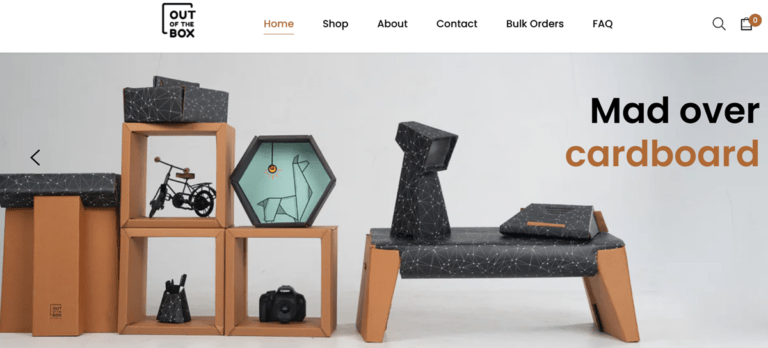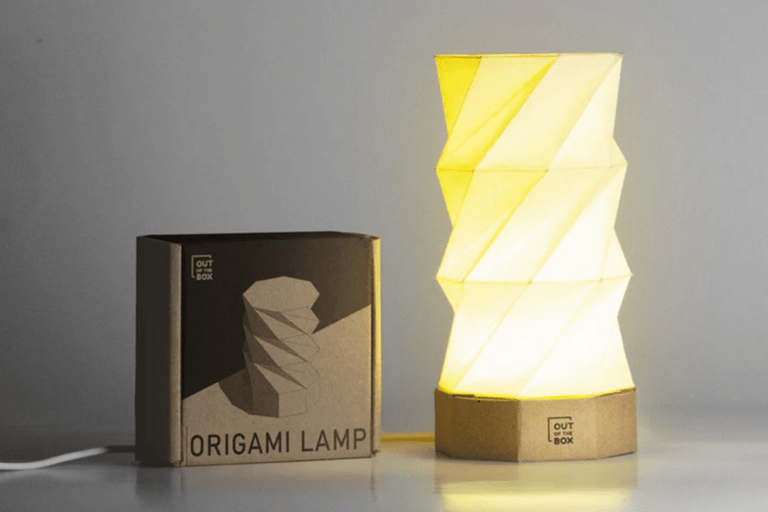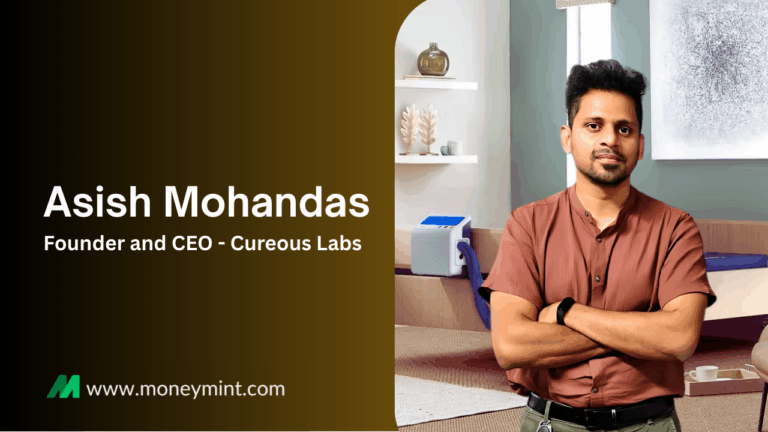We get our parcel in a cardboard box, unpack it, take our things out, and throw the box away. Nothing unusual because we never thought that we could use it in any other way. But a kid from Chennai, Karthic Rathinam, decided to transform his cardboard into furniture by using an interlocking method. Out of the Box Furniture can withstand more than 100 kgs and lasts for about 5 years without nuts, bolts, screws, or sticky adhesive.
| Startup Name | Out of the Box Furniture |
| Founders | Karthic Rathinam |
| Industry | Eco-friendly and sustainable furniture |
| Company Classification | Private Limited |
| Headquarters/based-in | Chennai, Tamil Nadu, India |
| Idea | To make eco-friendly and easy-to-assemble furniture from cardboard. |
| Revenue | Not much info is disclosed. |
| Date of Commencement | January 2022 |
| Investments | Rs 1 lakh and savings of the founder |
The Problem: Why Does This Matter?
In 2018, D S Kulkarni, a prominent builder, was a well-known figure who had investments in real estate, entertainment, dairy, travel, power, and education industries. His assets, which were widespread across the state, were seized by the Maharashtra government amid allegations of his involvement in a land scam.
This affected many people, including the students of DSK International School of Design. Students were suddenly asked to move to a temporary campus and Karthic moved with them. Unlike the campus hostel, the new infrastructure lacked necessary facilities. All that Karthic had was an empty flat and 40 cardboard boxes containing his belongings.
He was short on money to buy new furniture and did not want to inform his parents and cause unnecessary stress to them.
The Solution: Out of the Box Furniture

Using his skills in product design, Karthic used the cardboard boxes to prepare a bed and stool. Eventually, the bed lasted for 8 months.
Inspired by it, he built a study table, a sofa, and other furniture with cardboard. And by the time he completed his graduation, his apartment was furnished with cardboard.
Realizing his potential, he decided to pursue his skill on a professional level. But soon COVID-19 pandemic struck and Karthic had to return to his hometown. At that time, sanitizer dispensing stands were sold in the market for Rs 2k and that gave Karthic an idea; to make a cost-effective substitute from cardboard.
And he did that, and then published a video on Facebook, offering it at a price of Rs 500 for it. This turned out to be the starting point of his startup Out of the Box Furniture.
With the video, he expected 30 orders but received 2000 orders within the week. Soon Karthic and his one reliable vendor prepared and were able to ship orders across different Indian states and about 800 in the UK.
Karthic moved to Gujarat as the state is known for its paper industry, making it easier to find superior quality paper. He finalized 55 designs and built a team of 6 people.
Set Back
In April 2021, due to logistics and business challenges he shut down operations and eventually returned to Chennai.
Then, in June 2021, he decided to start from scratch and hired 4 more people. His 26 products underwent multiple prototypes and testing until December.
Finally in January 2022, Out of the Box was launched, offering eight 100% cardboard products: chair, laptop stand, table lamp, study table, stool, and hexagon shelf. These products can withstand 150 kilograms, are oilproof and waterproof, and can last up to 5 years. And within a month he received 200 orders.
Business Model: How Do They Make Money?
Soon, Karthic received responses from South Africa, and they wanted to manufacture the cardboard furniture themselves. Both parties agreed on a royalty sharing model, and Karthic patented the design.
With 28,000 units sold across 55 countries in South Africa, and the deal earned him around Rs 6 lakh. Products are priced between Rs 49 and Rs 700.
Challenges/Struggles: What Roadblocks Are They Facing?
| Challenges | Solutions |
| Receiving 2k+ orders and manufacturing alone to deliver thousands of orders was a challenge. | Karthic approached various vendors but most of them doubted his unique perspective. But one agreed to try this new skill. |
| Devices and furniture were difficult to ship in their exact shape. The chances of getting damaged were very high and they required more space. | He decided to make flat cardboard which can be easily assembled by the customers. |
| Financial support was another big challenge which limited research and development. | Karthic invested Rs 1 lakh from his internship work and invested profits that he earned from selling his cardboard sanitizer stands. |
| Designing products from customers’ point of view. | Karthic cut and prepared boards to overcome this challenge and design the products as per customers’ wish. All they have to do is to fit and interlock them together. |
| Convincing customers was the biggest challenge. They had their doubts and queries. | Convincing took time and after buying the products, winning customers’ trust was easier with the quality of the Out of the Box’s products. |
Future Vision: What’s Next?
Presently, Karthik is working on building a cardboard house and he has plans to release a new range of products in every quarter, like pop-up installations, cabinets and more.
Now, Karthic aims to launch more eco-friendly and convenient furniture alternatives to traditional ones.
Key Takeaways: Why Should Users Care?

From Karthic we can learn:
- To find opportunities in adversities.
- Use your skills to the best.
- Believe in yourself and your skills.
- Make money with what you have and do not run after getting big in the beginning.
- Bring better and more affordable solutions.
- Focus on quality of the products and customer satisfaction.
- Do not get overwhelmed with customers’ queries and doubts. Solve them with the best quality of your product and services.




